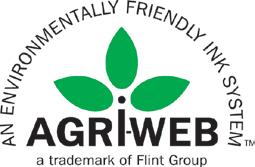your data is telling you














The 2015 tax season toolkit is here. Find out what you need to know to prepare your clients and your practice.

Performing data analytics can help CPAs make informed decisions and presents several benefits and opportunities.

CPAs engaged as expert witnesses should know the legal and professional standards when helping assess economic damages.
VSCPA life member Walter Stosch, CPA, has spent the last 33 years in Virginia politics.


VIRGINIA SOCIETY OF CPAs
4309 Cox Road Glen Allen, VA 23060 (800) 733-8272 Fax: (804) 273-1741 www.vscpa.com
http://disclosures.vscpa.com
Jill Edmonds
Managing Editor disclosures@vscpa.com
Chip Knighton Contributing Editor
cknighton@vscpa.com
David Bass Public Relations & Communications Director dbass@vscpa.com
Olaf Barthelmai, CPA
Adam Chaikin, CPA
Cheri David, CPA
Jennifer Duff, CPA
Keith Gray, CPA
Genevieve Hancock
Alesia Lewis, CPA
David Peters, CPA
Mark Plostock, CPA
Jeff Schroeder, CPA
George Strudgeon, CPA Barbara Sukramani, CPA
Articles and advertising for future issues are due by 5 p.m. on the following dates:
March/April 2016 Jan. 4, 2016
May/June 2016 March 1, 2016
July/Aug. 2016 May 2, 2016
Sept./Oct. 2016 July 5, 2016
Nov./Dec. 2015 Sept. 1, 2016
Jan./Feb. 2017 Nov. 1, 2016
Statements of fact and opinion are made by the authors alone and do not imply an opinion on the part of the officers, members or editorial staff.
The VSCPA wrapped up a lengthy effort and launched its redesigned website Oct. 1. Here’s a sampling of the reactions we’ve gotten so far. Let us know what you think!
The site is awesome! Great job everyone!
MONIQUE VALENTINE FORD, CPA, Arlington
Great news for the @VSCPANews! Go check out their new redesigned website at vscpa.com.
VIRGINIA BOARD OF ACCOUNTANCY, Richmond
The new website looks great!
JEANNINE BIRMINGHAM, Alabama Society of CPAs
We also surveyed a group of members to gauge their reaction to the redesign. Here are some comments we received:
“Pleasing to the eye — easier to find the things that I am looking for. Nothing that I don’t like.”
“Fresh and clean look!”
“Logical menu bars and drop down menu options facilitate navigating to information easily.”
Cheers to these associations who are becoming a vetted source of valuable information. @ICBA @VSCPANews @AAHOA — @SYSTEMSOLUTIONS
@DHGLLP’s Bryan Campbell Contributes to @VSCPANews article on Growth of Craft Beer industry in Virginia. http://www.vscpa.com/ content/63607.aspx …
— @ANNEKCREASY
@ProfMitchell @business @PwC_LLP
@VSCPANews When companies treat employees well they build loyalty. There’s no checkbox for that.
— @WARTENBERGHANS
I like Andrea Kilmer’s advice: “Always reflect on the mission of the organization you are serving.”
CONNECT: connect.vscpa.com
TWITTER: @VSCPANews, @FinancialFit

LINKEDIN: tinyurl.com/VSCPALinkedInGroup FACEBOOK: facebook.com/VSCPA INSTAGRAM: instagram.com/VSCPA
Get in touch At the Virginia Society of CPAs, we love to hear from you. Whether it’s a quick email to a staff member, chat on the phone, Disclosures letter to the editor, tweet, blog comment or something different altogether, let us know what you’re talking about, how you feel about different issues affecting CPAs and how we can help.
tweet or something different altogether, let us know what you’re talking about, how you feel about different issues affecting CPAs and how we can help.
For the second consecutive year, the VSCPA and Virginia Business magazine partnered to host a panel discussion on the Society’s annual Virginia Economic Expectations Survey. Check out a breakdown of the survey results on page 9; further analysis appears in the November issue of Virginia Business. And if you’d like to hear discussion of the results from your fellow VSCPA members, visit vscpa.com/ EconExpectationsPanel for insights from members Jennifer Duff, CPA, of Management Stack in Salem; Mike Gracik, CPA, of Keiter in Glen Allen; James Haggard, CPA, of Dixon Hughes Goodman in Newport News; and John Renner, CPA, of Renner & Co. in Alexandria.
Those are just four of the economic experts among the VSCPA membership. The exact count is up to interpretation, but by our standard, we’d estimate that there are slightly more than 12,000 economic experts among VSCPA members. Yes, that’s all of you. You can quibble with that analysis, but even our student members are experts in training. The extensive education and training required to obtain the CPA license ensures that. (And we’d love to have your expertise included in next year’s survey, so be sure to participate!)
The measured, analytical approach of the CPA is evident in the responses to the survey. When asked to describe their economic outlook on the national economy for 2016, 93 percent answered “somewhat optimistic,” “balanced” or “somewhat pessimistic.” In other words, measured, qualified optimism or pessimism — the sky isn’t falling, nor is the economy riding a rocket ship to the moon. In a time when pundits and politicians alike are taking turns seeing who can craft the most outrageous take — we are heading into a presidential election year, after all — you can count on CPAs to sift through the noise and get to the meat of an issue.
Along similar lines, respondents overwhelmingly indicated that political partisanship has a negative effect on our ability to solve problems. Seventy-nine percent said that partisanship at the federal and state levels is preventing the government from addressing urgent needs that affect businesses. And while two-thirds of respondents said that the Affordable Care Act (ACA) was hurting the U.S. economy, 55 percent of respondents favored reforming the law instead of repealing it outright.
VSCPA members as a group aren’t interested in partisan politics. They’re focused on solving economic problems and helping their clients navigate existing and future conditions.
And no VSCPA member represents that attitude better than Virginia Sen. Walter Stosch, CPA (R-Henrico). Stosch is retiring from public service at the end of the year after a 33-year career that included lengthy stints as Senate Majority Leader and Senate Finance Committee chairman. You can read more about his illustrious career on page 24, but one quality in which Stosch took great pride was his statesmanship. During his political career, he was known for putting politics aside in order to pass legislation that was in the best interests of Virginia’s taxpayers and businesses.
When he announced his retirement, Michael Martz of the Richmond Times-Dispatch noted that Stosch was a leader in a “moderate Republican faction that often has aligned itself between Senate Democrats and an increasingly conservative Republican caucus on contentious policy issues,” and that he recently crossed party lines to advocate for Marketplace Virginia, an ultimately unsuccessful plan that would have used federal money from ACA taxes to buy private health insurance for uninsured Virginians.
When he announced his retirement, Stosch bemoaned the polarization of politics in Virginia and nationwide, saying, “It makes compromise and simply getting things done more difficult but even more important.” That strikes me as good a summation of the CPA ethos as anything. When you see the CPA letters, you know that person has a professional duty to analyze facts in as fair and nonpartisan a way as possible. We can honor the careers of Walter Stosch and the CPAs who came before us by continuing that tradition. n
STEPHANIE PETERS, CAE, has served as president and CEO of the Virginia Society of CPAs since 2007.
speters@vscpa.com connect.vscpa.com/StephaniePeters @StephPeters

There are slightly more than 12,000 economic experts among VSCPA members. Yes, that’s all of you.
New surveys and studies are showing just how attractive the accounting profession really is. More students are enrolling in college accounting programs. Hiring is reaching record levels. Salaries are going up. Accounting is the most profitable industry.
The American Institute of CPAs’ (AICPA) 2015 report on the supply and demand of accounting graduates, which covers the 2013–2014 academic year, found that a record number of students are flocking to the accounting profession.
Enrollment in college accounting programs reached an all-time high, with a 3 percent increase in bachelor’s program enrollments and a whopping 19 percent increase in master’s program enrollments.
Luckily, firms will be able to hire all these new recruits. There was an 11 percent increase over 2012 in hiring master’s degree recipients, and 5 percent growth in bachelor’s recipients. And firms believe these trends will continue — 91 percent expect to hire the same amount or more new graduates in the coming year.
The money is there. According to Sageworks, the category of accounting, tax preparation,
bookkeeping and payroll services was the most profitable industry in the United States last year, with a net profit margin of 19.6 percent.
In its 2016 Salary Guide, Accounting Principals projects that accounting and finance salaries will grow 2.4 percent next year. And Robert Half anticipates average starting salaries for accountants will increase between 4 and 5.3 percent over last year. It estimates that starting salaries in public accounting will rise slightly more than corporate accounting salaries.

All of this good news equals increased optimism. Ranstad Professionals surveyed nearly 4,000 accounting and finance professionals, and 62 percent are very confident they could find a new job.

But that doesn’t necessary mean it’s easy for employers to secure the talent they crave. A 2015 AICPA survey found that 68 percent of finance decision-makers report strong competition for workers. The highest number, 43 percent, believe the talent pool has increased competition for good candidates. n
The American Institute of CPAs (AICPA) is seeking comment until Nov. 30, 2015, on its exposure draft, “Maintaining the Relevance of the Uniform CPA Examination.”
The new Exam, launching in 2017, will better test high-order cognitive skills. The exposure draft is the culmination of in-depth research, critical data analysis, best practices in testing development and the collective thoughts of leaders in the profession. In the draft, you’ll find a summary of changes between the current Exam and the next version, as well as detailed information on the knowledge and skills to be tested.
Learn more on the CPA Exam changes and find the exposure draft at aicpa.org/ nextcpaexam. n
good to know...
Virginia is only one of four states that call themselves “commonwealths”; the others are Kentucky, Massachusetts and Pennsylvania. All four were originally colonies (though Kentucky was part of Virginia), and Virginia called itself a “commonwealth” before joining the United States. According to Wikipedia, “commonwealth” is a traditional English term for a political community that is founded for the common good. n
It’s a great time to be an accountant.
Have you ever handed out a worksheet in a meeting with rows and rows of numbers and then watched each person try to review the numbers to determine if there any trends within each row or column? Help them by inserting a miniature graph next to each row or column so they can visualize what is happening within each. With Excel’s Sparkline tool you can insert a miniature graph that is the size of just one cell.
To insert a Sparkline, click on the cell where you want the graph. Then click on the Insert tab in your ribbon on top and select the style of Sparkline you think would work best for analyzing your data: Line, Column or Win/Loss. Next, the Create Sparklines dialog box will open and you will need to select the Data Range (row or column, no headers) that contains the numbers you want to visualize. If the location of the Sparkline is acceptable, click OK.
To modify the look of your Sparkline, select the Sparkline you inserted and click on the Design tab in your ribbon. Within the Design tab you have the tools needed to change the type, style and color of your Sparkline to fit your needs. n
GEORGE D. STRUDGEON, CPA, CGFM, is an audit director at the Virginia Auditor of Public Accounts in Richmond. Email him if you have Excel topics you want him to cover.
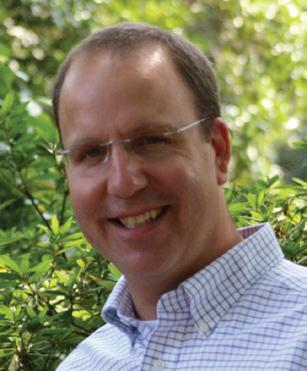
* george.strudgeon@gmail.com connect.vscpa.com/GeorgeStrudgeon
The 2016 edition of CPA Assembly Day, where VSCPA members visit their elected representatives at the Virginia General Assembly, will take place Tuesday, Jan. 19, 2016. We’d love to have you join us!
Your presence shows Virginia legislators that CPAs are committed to being an integral, active part of the legislative process. If you can’t attend in person, watch your email inbox that morning for virtual participation options. Visit vscpa.com/CPAAssemblyDay for more details. n
Top news from the Capitol and other national happenings…

CPAs cheered on July 31 when President Obama signed legislation to change the filing due dates for certain returns. The American Institute of CPAs (AICPA) and VSCPA had advocated for the changes for years because CPAs were frustrated by receiving information late and then not having enough time to file. Changes are effective for the 2017 filing season. Find a handy chart with all the changes at tinyurl.com/newtaxduedates.
To combat fraud, the U.S. Internal Revenue Service (IRS) has eliminated automatic extensions for most W-2 series forms. The IRS simultaneously issued a temporary regulation (T.D. 9730) and proposed regulations (REG-132075-14) on Aug. 13, 2015. Visit irs.gov for more info.
As of July 31, 2015, there are new rules that require consistent reporting of basis between an estate and property acquirer. Statements must be sent to the IRS and beneficiaries within 30 days of the estate tax return’s due date. Read more from the Journal of Accountancy at tinyurl.com/estatebasisreporting.
If your organization qualifies as an applicable large employer and chooses not to offer affordable, minimum essential health care coverage under the Affordable Care Act, it may need to make employer-shared responsibility payments to the IRS. Learn the ins and outs at tinyurl.com/sharedresponsibility.
Final IRS regulations mandate corporations that meet six requirements will be able to effectuate F reorganizations tax-free when those reorganizations involve only a change of identity, form or place of organization. The regulations also govern outbound F reorganizations with foreign corporations. n
CPA serves as a governor: Rick Snyder, CPA, in Michigan, and one as lieutenant governor: Mary Taylor, CPA, in Ohio.

It’s not so easy to follow the U.S. Securities & Exchange Commission’s disclosure rule surrounding conflict minerals. A new report from the Government Accountability Office (GAO) found that two-thirds of public companies subject to the rule could not determine the origin of their conflict minerals.
Under the rule, mandated under the DoddFrank Act, companies must identify the source of any of four minerals (gold, tin, tungsten and tantalum) that could be linked to violence in Africa. The GAO report discovered 67 percent could not determine the source of their conflict minerals due to difficulty obtaining the information from suppliers and communication issues. The conflict minerals disclosure rule is proving expensive; Tulane University found that public companies paid approximately $709 million last year to comply. n

The number of hours drivers in the Washington, D.C., metro area are stuck in traffic per year, according to the Texas A&M Transportation Institute. That’s No. 1 in the nation, followed closely by Los Angeles (80 hours), San Francisco (78 hours) and New York (74 hours). n
The U.S. economy is making incremental progress, according to the VSCPA members who responded to the Society’s 2016 Virginia Economic Expectations Survey, a partnership with Virginia Business magazine (which is doing its own breakdown of the survey in its November issue).
In the 2015 survey, respondents were deadlocked at an even 50-50 split on the question, “Do you believe the United States is in a sustained economic recovery?” This year, the “Yes” votes had it with a 53 percent — 47 percent advantage. But it wasn’t all roses, as a plurality of respondents (42 percent) indicated that a full economic recovery would take more than four years, while only 10 percent said the recovery would be finished in less than two years.
The VSCPA and Virginia Business held a panel discussion at the CPA Center in Glen Allen on Sept. 10, with four VSCPA members, representing the state’s four largest metropolitan areas, on the panel:
>> Jennifer Duff, CPA, CFO of Management Stack LLC in Salem (Roanoke area)
>> Mike Gracik, CPA, managing partner at Keiter in Glen Allen (Richmond area)
>> Jim Haggard, CPA, partner at Dixon Hughes Goodman in Newport News (Tidewater)
>> John Renner, CPA, principal at Renner & Co. in Alexandria (Northern Virginia)
Watch the panel discussion at vscpa.com/EconomicExpectationsPanel.
The 307 respondents ranked infrastructure as the most pressing issue for Virginia, with 23 percent going with that choice. Health care costs, government regulation, education and federal budget cuts all picked up at least 13 percent of the vote.
Infrastructure and health care costs have been the top two issues on the survey since 2014, although those issues swapped places this year.
Health care could remain an issue moving forward, with the Affordable Care Act (ACA) employee mandate kicking in for companies with 50 or more employees. Sixty-three percent of respondents cited health care costs as the top financial problem for Virginia businesses.
“We do expect the problems to be worse next year,” Gracik said, “partly
Economy savvy: VSCPA members Jennifer Duff, CPA, and Mike Gracik, CPA, take questions during the VSCPA’s 2016 Virginia Economic Expectations Survey panel discussion on Sept. 10. Visit vscpa.com/EconomicExpectationsPanel to watch the discussion or visit this page in the digital edition at disclosures.vscpa.com.
due to the mandate and partly with what you see with rising costs for all insurers.”
Two-thirds of respondents said the ACA is hurting the U.S. economy. Respondents were split on the best way to move forward, with 55 percent favoring reforming the law and 45 percent favoring repeal. Just one-third of respondents said Virginia should accept federal dollars for Medicaid expansion.
Virginia CPAs were in agreement on several other issues:

>> An independent, bipartisan commission should be designated to redistrict state legislative and Congressional seats in Virginia (66 percent)
>> Support for the Atlantic Coast Pipeline through Virginia (72 percent)
>> There is an adequate talent supply to replenish the Virginia workforce (71 percent)
>> The region has not done enough to lessen its dependence on federal spending (84 percent)
Nine out of 10 respondents said their company anticipated increasing or maintaining revenues in comparison to 2015, with 64 percent anticipating revenue growth for their firm. n

For a full report on all the changes (this list is not all-inclusive), read the “2015 Legislative Summary” from the Virginia Department of
Taxation (TAX), available as a PDF at tax.virginia.gov. All changes went into effect July 1, 2015, unless otherwise stated.
The 2015 General Assembly advanced Virginia’s date of conformity to the Internal Revenue Code from Jan. 2, 2013, to Dec. 31, 2014. On Dec. 19, 2014, Congress enacted the Tax Increase Prevention Act of 2014 (TIPA).
This legislation extended a number of expiring federal tax provisions.
In addition, conformity allows Virginia to establish a program under the Achieving A Better Life Experience Act of 2014 (ABLE Act). When Congress enacted TIPA, it also incorporated the provisions of the ABLE Act. These provisions allow certain disabled individuals and their families to create taxfree savings accounts and use distributions from such accounts to pay qualified disability expenses on behalf of disabled individuals. Such expenses include, but are not limited to, education, housing, transportation, employment training and support, assistive technology, personal support services, health care expenses, financial management and administrative services.
Virginia still disallows any bonus depreciation allowed for certain assets under federal income taxation and any five-year carry-back of federal net operating losses (NOL). In addition, Virginia will continue to deconform from certain applicable high-yield discount obligations and cancellation of debt income provisions.
The legislature established a program for Achieving a Better Life Experience (ABLE) savings trust accounts to facilitate the saving of private funds to pay the qualified disability expenses of certain disabled individuals.
Under the federal ABLE Act, Congress authorized states to establish ABLE savings trust accounts to assist individuals and families in saving for education, housing, transportation, employment training and support, assistive technology and personal
support services, health, prevention and wellness, financial management and administrative services, and other expenses of individuals who were disabled or blind prior to the age of 26. The Virginia College Savings Plan is the designated state agency that will administer ABLE savings trust accounts in the Commonwealth.
Under federal law, earnings on contributions to ABLE savings trust accounts are exempt from federal income tax. Because Virginia conforms to the federal income tax treatment, such earnings are also exempt from Virginia income tax.
Beginning Jan. 1, 2013, the Virginia Department of Treasury stopped issuing income tax refunds through checks. The state comptroller was only to issue income tax refunds through debit cards, direct deposits, or other electronic means, unless the tax commissioner determined that a check was more appropriate for a transaction or a class of transactions.
Legislation was passed requiring the tax commissioner and the state comptroller to implement procedures allowing an individual to elect to have his refund paid by check mailed to his address. As a result of this legislation, taxpayers will now have the option to receive their individual income tax refunds through checks, in addition to direct deposits or any other electronic means the tax commissioner deems necessary.
Effective March 26, 2015, TAX may charge a fee of $5 per copy of a tax return requested by a taxpayer or tax representative. Taxpayers may request a waiver from the administrative fee for copies of tax returns. Waivers will be granted if the tax commissioner finds that this requirement creates an unreasonable burden
on the person requesting copies of tax returns. All requests for waiver should be submitted to the tax commissioner in writing.
Effective Jan. 1, 2015, for taxable years beginning on and after Jan. 1, 2014, passthrough entities are required to file their annual returns and make any related payments electronically. Pass-through entities may request an annual waiver from the electronic filing requirement. Waivers will be granted if the tax commissioner finds that this requirement creates an unreasonable burden on the person required to use an electronic medium. All requests for waiver should be submitted to the tax commissioner in writing.
Virginia now allows an individual income tax subtraction for income attributable to the discharge of a student loan solely by reason of the student’s death.
Virginia generally conforms to federal income tax law and begins the calculation of a taxpayer’s Virginia taxable income with his or her federal adjusted gross income (FAGI). Under prior law, Virginia did not provide any specific subtractions, credits or deductions for discharged student loans. Accordingly, such income was subject to Virginia income taxation to the extent it was included in a taxpayer’s FAGI.
A new subtraction was created for income attributable to the discharge of a student loan made to an individual. For purposes of this subtraction, a qualifying “student loan” is any loan to an individual to assist such individual in attending an educational organization that was made by: u
>> The United States, or an instrumentality or agency thereof;
>> A state, territory or possession of the United States, or the District of Columbia, or any political subdivision thereof;
>> Certain tax-exempt public benefit corporations that have assumed control over a state, county or municipal hospital and whose employees have been deemed public employees under state law; and
>> Charitable educational organizations, if such loan was made:
• Pursuant to an agreement with one of the above-listed entities; or
• Pursuant to a program designed to encourage its students to serve in occupations or areas with unmet needs, and under which the services provided by the students are for or under the direction of a governmental unit or certain tax-exempt organizations.
The subtraction generally does not apply to the discharge of private loans, nor does it apply to the discharge of loans that are already
The 2015 General Assembly enacted legislation affecting other Virginia
with clients who may be affected by these changes are encouraged to review the 2015 Legislative Summary to ensure that they are aware of these
and the opportunities that they offer. The following credits were affected by 2015
excluded from federal income taxation. This is effective for taxable years beginning on or after Jan. 1, 2015.
The sunset date for making investments in certain high technology businesses that qualify for the individual and corporation income tax subtraction for income taxed as long-term capital gain for federal income tax purposes was extended from June 30, 2015, to June 30, 2020. Beginning in 2015, TAX is required to annually submit a report to the governor, any member of the General Assembly or other person upon request regarding the fiscal savings that accrue to taxpayers from claiming the subtraction for income taxed as long-term capital gain for federal income tax purposes.
The annual Land Preservation Tax Credit cap was reduced from $100 million to $75 million. The amount of credit that may be claimed by each taxpayer was reduced to $20,000 for taxable years 2015 and 2016, and to $50,000 for taxable year 2017 and thereafter. However, for any qualifying fee simple donation of land conveyed to the Commonwealth on or after Jan. 1, 2015, the amount of credit claimed by each taxpayer is limited to $100,000. Conveyances only qualify for the $100,000 limitation if no part of the charitable contributions deduction under federal law related to such fee simple donation is allowable by reason of a sale or exchange of property.
Any employer otherwise subject to the semi-weekly income tax withholding requirements is now allowed to request a waiver from such requirements, provided that the employer has no more than five employees subject to Virginia income tax withholding. If the tax commissioner grants a waiver, the employer will be allowed to file withholding returns and pay the withholding tax on a monthly basis.
Legislation was enacted authorizing local commissioners of the revenue to compel taxpayers to produce documents for purposes of assessing local taxes. Additionally, local commissioners and their deputies are authorized to administer oaths before questioning taxpayers regarding their tax liability. Courts are authorized to compel a taxpayer to comply with a local commissioner’s summons or to produce required documents. Finally, local commissioners and their deputies are authorized to serve writs, warrants, notices, summonses or other processes that the commissioner may issue. Commissioners are authorized to direct this process to the sheriff for service.
The referendum on the Nov. 4, 2014, statewide ballot was approved to amend the Constitution of Virginia to allow the General Assembly to exempt from taxation the real property of the surviving spouse of any member of the armed forces of the United States killed in action, where the surviving spouse occupies the real property as his or her principal place of residence and has not remarried. Accordingly, the legislature expanded the real property tax exemption for the principal place of residence of a surviving spouse of a soldier killed in action by allowing dwellings assessed at more than the average assessed value of all dwellings in the single family residential zone to qualify for the exemption. The exemption is limited to that portion of the assessed value of the residence that does not exceed the average assessed value of all dwellings located within that single family residential zone. The exemption applies without any restriction on the surviving spouse moving to a different principal place of residence. A refund, without interest, of any tax year 2015 real property taxes paid on a qualifying surviving spouse’s real property that is exempt is also required. n
Have you signed up for Don Farmer’s seminars yet? Here’s where he and Walter Nunnallee will be in Virginia this fall:
FEDERAL TAX UPDATE
>> November 9, Fairfax
>> November 30, Richmond or online webcast
INDIVIDUAL INCOME TAX WORKSHOP
>> December 1, Richmond or online webcast
CORPORATE/BUSINESS INCOME TAX WORKSHOP
>> Richmond, December 2 or online webcast Register today at vscpa.com/CPE.
As a member of VSCPA, you can save with special discounts on Nationwide ® auto insurance. In addition, when you add rewards like Vanishing Deductible® , * you can take $100 off your deductible for every year of safe driving, for up to $500 in savings.
You wouldn’t be involved with VSCPA if you weren’t passionate about being part of a group that shares your values. We understand that feeling, because we treat customers like members. It’s one of the things that make us a different kind of insurance company.
Call Ronnie Shriner at (877) 683-3364 or visit nationwide.com/cps/pc-affinity-vscpa.htm for a quote today!
 BY BRANDON POPE AND JOHN BROZOVSKY, PH.D.
BY BRANDON POPE AND JOHN BROZOVSKY, PH.D.
Business professionals and accountants are seeing a rapid increase in data in an already fast-paced work environment. IBM estimates that 2.5 quintillion bytes of data are created every day and that “90 percent of the data in the world today has been created in the last two years alone.” Here’s how CPAs can use data analytics to their advantage.
In a world that is rapidly evolving, the amount of data that people are faced with is increasing at an astronomical rate. According to a survey done by the University of California, San Diego, “enterprise server workloads are doubling about every two years, which means that by 2024 the world’s enterprise servers will annually process the digital equivalent of a stack of books extending more than 4.37 light-years to Alpha Centauri, our closest neighboring star system in the Milky Way Galaxy.” The sheer size of such an amount of data is hard to comprehend.
Also, the amount of money in data will continue to surge as companies adapt, technology becomes cheaper and accountants have more business opportunities. According to Baseline magazine, big data is projected to grow into a $53.4 billion market by 2017, which is compared to the $10.2 billion market it held in 2013.
The accounting industry is arguably undergoing the largest transformation in recent generations. Technology is transforming the way companies do business and consequently, how accountants do their jobs. According to PricewaterhouseCoopers’ (PwC) Global Data and Analytics Survey 2014, 64 percent of all respondents said that
big data has changed decision making at their organizations.
While many people are aware of certain new resources available to businesses in the age of increased technology, many professionals are unaware of the incoming wave of technology and how it will continue to affect businesses. Numerous executives have already begun implementing data analytics in their companies and are beginning to see results. However, even these companies are likely not using data analytics to the extent they could or should. For example, 52 percent of C-suite respondents to the PwC survey said they have previously discounted data they don’t understand.
Technology is changing and updating at an amazing speed and businesses are being forced to adapt: addressing certain problems while new ones arise. Some companies are rising to the challenge and developing competitive advantages, while others are not. Business executives are not alone in this issue; accountants are finding themselves in the middle of this technological change. Whether it’s being flooded with data and not having the capacity and resources to respond or increased time constraints and efficiency issues, accountants are being forced to change the way they analyze data as well.
Identifying and emphasizing relationships, trends and exceptions among data are some of the most beneficial components of data analytics. However, the amount of data companies and accountants are receiving isn’t the only issue. Complexity is just as problematic. According to a recent KPMG report, 94 percent of executives surveyed identified increasing complexity is one of the biggest challenges their company faces, and
managing complexity is important to their company’s success.
Currently, many accountants and auditors have limited outlets for identifying high-risk deviations and exceptions within client data. Data analytics can help solve this this through a fundamental understanding of database construction and modeling. When auditors and accountants get data from clients, it’s often numerous, unorganized and hard to understand. Data analytics can help provide structure to this information. With data analytics, accountants will first have to “stage” the data outside the client database. From there, they can begin to manipulate the data by “scrubbing” it — removing certain fields and records that aren’t needed. In regard to relationships, auditors can use data analytics to examine and summarize large groups of data. For example, after staging and scrubbing a client database, an accountant could have several months’ worth of transactions that provide insight into a change in growth of revenue, sales, etc. With that same set of data, the accountant could see trends developing concurrently. When the data is transformed into summary level information, the accountant and auditor can more easily identify exceptions.
Data analytics is changing the landscape of how public accountants do business: how engagements are developed, staffed and performed. Firms that have data analytics in place are already seeing competitive advantages from such uses. Growing companies present complex opportunities u
The practice of data analytics is changing the world, increasingly providing many benefits and opportunities to accounting professionals.
to auditors. In accepting engagements, auditors are using data analytics to provide value by helping increase industry knowledge and impress potential clients. Understanding clients’ accounts more thoroughly and assessing risk more accurately are both ways analytics can be used to develop and better plan an audit. Also, data analytics can play a key role in determining how much work needs to be performed on an audit. Building off older audit procedures, analytics allow auditors to better analyze key parts of the audit including capital assets, fair value investments, cash accounts and more.
Auditors also have the opportunity to pull data and information directly from clients’ work papers, documents and other resources. This not only allows auditors to receive the requested data faster, but also provides a greater depth of data. Auditors who use data analytics are able to manage larger amounts of data and can even provide assurance on an entire population rather than just for a sample. This function alone should excite the industry, as greater assurance is helpful to the auditor, client and ultimately, general investing population. Also, with data analytics providing 100 percent assurance in some areas, auditors can spend more time performing additional substantive testing on higher risk areas. Auditors with clients that have complex subsidiary issues will also benefit from using data analytics, as increased efficiency can be applied here, too.
The term “continuous auditing” used to describe a futuristic topic that people wouldn’t see for years to come. For internal auditors, continuous auditing is now becoming reality. Information technology systems function by collecting data from client controls, records, transactions, etc. Internal auditors currently use this as a means of gathering audit evidence and assessing risk throughout the year. Data analytics can supplement this procedure by adding more quantitative substance. With data analytics, internal auditors can implement technology-based processes and set up a more accurate, maintainable auditing infrastructure.
Many of the benefits to external auditors are also applicable to internal auditors. For example, an internal auditor can also use data analytics to manipulate departmental information and databases to identify trends and riskier areas within the company. Internal auditors can also better examine the control environment. Forming more understandable and summarized information allows internal auditors to better inspect and assess the appropriateness of individual employees’ responsibilities.

Improving the cost-benefit relationship is another benefit of data analytics. While many companies do not have the financial stability to fully implement a complex, intricate data analytics division, executives are finding that well-trained accountants equipped with proper analytics tools provide tremendous value to the company, at reduced costs of traditional accounting and analysis functions. In fact, according to a recent Robert Half survey, 82 percent of the 2,100 CFOs surveyed said they are using in-house training as a means of improving employee’s business analytics skills. According to the PwC report, 83 percent of executives believe that their organization has a sufficient pipeline of talent to analyze all the data it collects.
However, companies may not have the “sufficient pipeline of talent” for long, as the demand of data analytics may not be met with an equal supply. According to a 2011 McKinsey and Company report, “by 2018, the United States alone could face a shortage of 140,000–190,000 people with deep analytical skills.” This statistic should come with great excitement to many accounting professionals, as the value of data analytics talent and skills will skyrocket in the years to come.
While it’s good to have the talent to be able to analyze data, actually having the skills and some experience is becoming extremely important to accountants. According to the Robert Half survey, 61 percent of the
According to IBM, 90 percent of the data in the world today has been created in the last two years alone.
CFOs surveyed said “expertise in business analytics, such as business intelligence and data mining, is mandatory for some or all of their accounting and finance employees.” Companies need to supply their accountants with the proper tools to take advantage of and optimize the data analytics opportunities that are waiting.
Realizing and deciding that data analytics needs to be implemented in a firm or company is a large and necessary step. Deciding what data analytics to implement and to what extent depends on several factors, including cost and which benefits are desired. For firms and companies that aren’t quite ready to make the enormous capital investment for a complex data analytics system, there are some cheaper options that will afford many of the same opportunities.
Many firms already have Microsoft Office available to their employees, so Microsoft Access is either free or relatively inexpensive. Access is widely known for its ability to create organized databases, but it is also a great resource for developing user applications and can be a valuable data analytics tool. Using Access, professionals can input scrubbed data and form very useful databases that can be used for further analyzing.
For more sophisticated software, accountants and companies may look to Microsoft Sequel for data analysis. While this is similar to Access, Sequel allows professionals to build greater applications that can help users access, analyze, clean and shape internal and external data in a quick and efficient manner. Sequel’s results allow for more informed decisions and higher-quality solutions.
Beyond these two options, there is a third software available called Tableau. While it
is not free, it is within reach for most firms. Tableau is a data visualization software that focuses on providing an interactive experience that allows users to better understand and view their data. With the Tableau software, professionals are able to transform data into useful analysis and, consequently, make valuable decisions. Databases, spreadsheets and other big data sources are all eligible to be combined into several different formats that allow for new and improved ways of seeing things. Its easy-to-use nature affords less tech-savvy professionals to reap the benefits without the extensive learning curve of more extensive and expensive software.
A highly unique feature of Tableau is its ability to share information with other professionals. Published dashboards can be shared with other members on the same network. Not only does this transform the boundaries of functional working teams, but it also drastically improves the time and cost professionals and business members are spending on compiling, preparing and presenting information.
A fourth software that may attract more price sensitive professionals and firms is provided by MicroStrategy. MicroStrategy’s Analytics Desktop is very similar to Tableau. This selfservice software allows business professionals to access many data analytics features for free. The Graphical Query Builder is unique to MicroStrategy’s product, and it can show data relationships as the user defines them without any coding required. With over 400 built-in analytical functions and a fourth generation in-memory architecture, users can now get more valuable insights nearly instantly.
Much like Tableau, this software has data merging abilities to combine data from multiple sources and numerous visualizations to better see and analyze data, identify extremities and make better decisions. Also,
with its cloud sharing ability, professionals can swap and share data files and dashboards with other users quickly and easily.
Data analytics is going to continue to progress as businesses advance, technology becomes cheaper and more accessible, and more professionals begin to implement it into their daily working lives. Over the next decade, accounting professionals will be performing their jobs in almost completely different ways and new professionals will have a distant memory of how things were once done before the dawn of data analytics. Firms and companies alike will be making more informed decisions and as a result, business will benefit and thrive in a way that was not previously available. While intricate, complex data analysis systems and software are available, firms can choose more inexpensive options that allow them to still receive valuable data analytics.
Increasing client relationships, improving margins and cost-benefit metrics, reduced data redundancy, increased accounting efficiency and greater talent pools are just some of the limitless benefits data analytics has to offer. Whether CPAs are internal auditors, external auditors or general professionals of the industry, one thing is certain: Data analytics is an invaluable tool. n
BRANDON POPE, CPA, wrote this article as a master’s of accounting student at Virginia Tech in Blacksburg and is now an audit associate at Keiter in Richmond. JOHN BROZOVSKY, PH.D. is a Virginia Tech associate professor.
Bpope1@vt.edu jbrozovs@vt.edu.
Ninety-four percent of executives say increasing complexity is one of the biggest challenges their company faces, according to KPMG.
 BY HAROLD G. MARTIN JR., CPA/ABV/CFF, ASA, CFE
BY HAROLD G. MARTIN JR., CPA/ABV/CFF, ASA, CFE
In business litigations, CPAs are often engaged by an attorney to assist as consultants or expert witnesses in quantifying or rebutting economic damages suffered by the plaintiff as a result of an alleged harm committed by the defendant. This article presents an overview of the legal principles
and professional standards, as well as the key concepts with which a CPA should be familiar when expressing an expert opinion on damages in business litigation. The discussion of damages focuses on lost profits for illustrative purposes; other measures of damages may also be applicable depending on the particular facts and circumstances.
The overall objective of a civil litigation is to make the harmed party whole and punish the defendant for committing a wrongful act. To accomplish this, assuming that a defendant is found to be liable, the court may award damages to the plaintiff. “Black’s Law Dictionary” defines “damages” as: “money claimed by, or ordered to be paid to, a person as compensation for a loss or injury.” As discussed in “AICPA Practice Aid 06-04 — Calculating Lost Profits,” there are three types of damages awarded:
>> Actual or compensatory: As compensation for an actual harm
>> Nominal: As a result of a harm, but the amount is immaterial
>> Punitive: In addition to actual damages in the event the defendant acted with deceit, malice or recklessness (not recoverable in a breach of contract)
Damages such as lost profits are an example of actual or compensatory damages. Claims for these types of damages usually arise from either a breach of contract or a tort (e.g., fraud, negligence, personal injury, property damage, unfair competition, unlawful misappropriation).
To be awarded actual damages in a civil litigation, a plaintiff must prove two critical points to the trier of fact (i.e., the judge in a bench trial or the jury in a jury trial): The defendant was liable (i.e., caused harm to the plaintiff) and the plaintiff suffered economic harm as a result of the defendant’s actions.
Typically, the CPA expert’s scope of work will not include the determination of liability (causation of the harm), but will instead focus on the quantification of the resulting damages. However, in order to quantify damages, it is important to understand the principle of causation as it may have implications for the damages calculation.
Damages are recoverable by the plaintiff only if the act committed by the defendant was the proximate cause of the damages. The plaintiff must prove that the wrongful act committed by the defendant directly resulted in the harm suffered by the plaintiff. Virginia courts define “proximate cause” consistently, stating it “is that act or omission which, in natural and continuous sequence, unbroken by an efficient intervening cause, produces the event, and without which that event would not have occurred” (Cohn v. Knowledge Connections, Inc.).
If the attorney instructs the expert to assume causation and limit the scope of work to the quantification of damages, the expert should still consider whether all of the claimed damages incurred by the plaintiff resulted from the wrongful act of the defendant or there were other contributing factors. For example, if a portion of the plaintiff’s losses are attributable to economic conditions, then this portion of the losses would not be recoverable from the defendant.
The plaintiff must prove damages to a reasonable degree of certainty, i.e., damages are recoverable only if the plaintiff can prove that the damages are reasonable and have been calculated without speculation. Applicable federal or state laws define the required degree of certainty. The courts draw a distinction between “certainty in fact”and “certainty in amount,” as stated in Palmer v. Conn. Railway & Lighting Co.:
However, it is important to recognize that the calculation of net lost profits pursuant to the standard of “reasonable certainty” does not require exact precision. In an early case, the U.S. Supreme Court separated the certainty regarding the fact of damages from the reasonable certainty as to their amount. “Certainty in the fact of damages is essential,” it ruled: “[c]ertainty as to the amount goes no further than to require a basis for a reasoned conclusion.”
The Supreme Court of Virginia has made similar rulings in the following cases: Lockheed Information Management Systems Company, Inc. et al. v. Maximus, Inc.; Maximus, Inc. v. Lockheed Information Systems Company, Inc. et al.; and Leroy D. Wood v. Pender-Doxey Grocery Company
Historically, owners of new businesses were subject to state statutes that established standards that made it difficult to prove damages. These so-called “new business rules” precluded a new business from collecting damages under the theory that projected future losses were inherently speculative. However, many states have since repealed such rules in order to address the obvious inequity to the new business owner. For example, in 2002, the Code of Virginia, Unestablished business damages; lost profits, § 8.01-221.1, was amended to read: “A party shall not be deemed to have failed to prove lost profits because the new or unestablished business has no history of profits.”
A third legal principle, foreseeability, is applicable to contract claims. Under this principle, damages are recoverable only if they are reasonably foreseeable by the breaching party at the time a contract was executed.
The Federal Rules of Evidence (FRE) govern the admissibility of evidence at civil and criminal trials in federal courts. FRE Rule 702, Testimony by Experts, sets forth the criteria the court considers to determine admissibility of an expert opinion:
If scientific, technical, or other specialized knowledge will assist the trier of fact to understand the evidence or to determine a fact in issue, a witness qualified as an expert by knowledge, skill, experience, training, or education, may testify thereto in the form of an opinion or otherwise, if (1) the testimony is based upon sufficient facts or data, (2) the testimony is the product of reliable principles u
and methods, and (3) the witness has applied the principles and methods reliably to the facts of the case [emphasis added].
The majority of states have adopted evidence rules patterned after the FRE for use in their courts.
The U.S. Supreme Court has established additional guidelines for the courts to consider in determining the admissibility of expert opinions. In Daubert v. Merrell Dow Pharmaceuticals, the Supreme Court ruled that trial judges must make a pre-trial determination of whether expert testimony should be admitted. The Court outlined a twoprong structure to evaluate the admissibility of expert testimony:
1. Does the expert qualify in the stated field in accordance with the FRE?
2. Is the proposed testimony scientific knowledge that will assist the trier of fact?
The court also established four factors to consider:
1. Whether the theory can be (and has been) tested
2. Whether the theory or technique has been subjected to peer review or publication
3. The theory’s potential rate of error
While the Daubert decision focused on scientific experts, in Kumho Tire Co., Ltd. v. Carmichael, the Court ruled that the Daubert requirements apply to all expert witnesses. See sidebar for more information on Daubert challenges to financial experts.
In addition to any relevant legal requirements affecting a testifying expert, a CPA who is a member of the American Institute of CPAs (AICPA) must also comply with the AICPA Code of Professional Conduct in any role, including when serving as a consultant or expert witness in business litigation. Further, the AICPA’s Statement on Standards for Consulting Services, No. 1 (CS 100) applies to all AICPA members who provide consulting services including consulting or expert witness services in business litigation.
If the scope of work includes valuation services, AICPA members must also comply with the AICPA’s Statement on Standards for Valuation Services, No. 1 (VS 100). State boards of accountancy may also impose compliance with AICPA standards on their licensees even if they are not AICPA members. Moreover, as discussed in the AICPA’s “Essentials of Forensic Accounting,” triers of fact in legal disputes may essentially extend
the Code of Professional Conduct to any CPA in a particular matter as a de facto standard for the expected conduct of CPAs regardless of memberships or licensing.
Determining the appropriate measure of damages in business litigation depends upon the facts and circumstances (as well as applicable statutes). James R. Hitchner’s “Financial Valuation: Applications and Models” discusses the following alternative harm scenarios: temporary, permanent and temporary followed by permanent.
Temporary harm is depicted in Table 1. In this example, the business had been profitable historically and was projected to be profitable in the future. However, after being harmed, the business experienced a temporary decline in profitability (from the date of harm to the ending date of the damages period), before resuming its normal level of expected profitability. An appropriate measure of damages might be lost profits, which is calculated as the difference between the projected profits “but for” the harm and the actual profits during the damages period.
Permanent harm is presented in Table 2. In this example, the business also had been profitable historically and was projected to be profitable in the future. However, after being harmed, it had permanent decline in profitability from the date of harm into perpetuity. An appropriate measure of damages might be the loss in value calculated as the difference between the value of the business before the harm and the value of the business after the harm.
In
When
The appropriate measure of damages in which the business is initially temporarily harmed, but then ceases operations, would be measured using both lost profits and lost value. Lost profits would be used to measure damages for the period in which the business is temporarily harmed, and lost value would be used to measure the permanent harm at the time operations cease.
DAUBERT CHALLENGES
The period of time over which damages are calculated typically begins on the date of harm and ends on the date the plaintiff would have been returned to the position it otherwise would have attained but for that harm. For example, in a breach of contract claim, damages are generally projected to a point at which the operations return to normal or over the remaining contract term, if the contract term can be established with reasonable certainty. Alternatively, if the loss in value is permanent, the damages may be determined based upon a projection of the lost economic income into perpetuity.
The measurement date for purposes of calculating damages is typically the date of harm or the date of trial. Once the measurement date is determined, it is then necessary to select the information to be considered for purposes of analysis and also to determine how past and future damages will be valued (i.e., consideration of the time value of money). As discussed in “The Comprehensive Guide to Lost Profits and Other Commercial Damages” edited by Nancy J. Fannon and Jonathan Dunitz,there are two primary approaches that are used in practice: ex ante and ex post. The differences between the ex ante and ex post approaches consist of three key elements: 1) effective measurement date, 2) the information to be considered, and 3) the discount period.
In applying an ex ante approach, the date of initial harm is selected as the measurement date. The damages period begins on the date of harm and ends on the date the harm ceases. Only the information that is known or reasonably knowable as of date of harm is considered for purposes of the analysis and subsequent events are irrelevant. All lost profits (both past and future) are discounted back to the date of harm. Prejudgment interest for the period between the date of harm and date of trial is then added to the present value of the damages. Table 3 illustrates u
12/31/2013 12/31/2014 12/31/2015
Year Date of Trial Ending Date of Damages
Lost Value Date of Harm
Year Date of Trial Ending Date of Damages Continue into Perpetuity
12/31/2015
the application of the ex ante approach.
In applying the ex post approach, the date of trial is selected as the measurement date.
The damages period begins on the date of harm and ends on the date the harm ceases.
All information that is known or reasonably knowable as of the date of trial is considered for purposes of the analysis (subsequent events after the date of harm are considered).
Damages between the date of harm and date of trial (past damages) are not discounted.
Prejudgment interest for the period between the date of harm and date of trial are added to these past damages. Any future damages after the date of trial are discounted back to a present value as of the date of trial. Table 4 illustrates the application of the ex post approach.
Proponents of the ex ante approach note that it properly considers risk in that it measures damages at the date of the harm based on the information known or knowable at that point in time, and this value reflects the expected risk of achieving future income. This approach results in making the plaintiff whole based on the circumstances that existed as of the date
of harm. Alternatively, the ex post approach assumes a certain outcome as it considers information subsequent to the date of harm. This approach results in making the plaintiff whole based on the circumstances that existed as of the date of trial.
The differences in outcomes that may be obtained using the ex ante and ex post approaches are illustrated in a 1990 article, “Janis Joplin’s Yearbook and the Theory of Damages.” The article presents a hypothetical case involving the theft of a high school yearbook that cost $5. The yearbook was signed on graduation day by Janis Joplin, who later became a famous rock star. Sometime after this date, but before Joplin became famous, a thief stole the yearbook. After Joplin became famous, her signature was worth $1,000 to collectors. The theft was discovered and the original owner of the yearbook sued the thief for damages. At issue is whether the damages should be based on the value of the yearbook at: 1) the date of theft (ex ante) — $5, or 2) the date of the trial (ex post) — $1,000. The article proposes that making a plaintiff whole means making it whole as of the date of harm, which ignores hindsight and
takes into account uncertainty, and adding to this amount the time value of money.
An alternative view was expressed by the U.S. Supreme Court in Sinclair Ref. Co. v. Jenkins Petroleum Co. In this case, the Court advocated an ex post approach with respect to the information to be considered, noting that all available evidence comprised a “Book of Wisdom” that should be evaluated in reaching a decision:
At times the only evidence available may be that supplied by testimony of experts as to the state of the art, the character of the improvement, and the probable increase of efficiency or savings of expense. ... This will generally be the case if the trial follows quickly after the issue of the patent. But a different situation is presented if years have gone by before the evidence is offered. Experience is then available to correct uncertain prophecy. Here is a book of wisdom that courts may not neglect. We find no rule of law that sets a clasp upon its pages, and forbids us to look within.
Some experts have adopted a hybrid approach that blends aspects of both the ex ante and ex post approaches. The hybrid approach is similar to an ex ante approach with respect to the measurement date, the damages period, discounting and calculation of prejudgment interest. However, it is similar to the ex post approach with respect to the information considered.
Ultimately, the selection of the appropriate approach for measuring damages is a legal matter, and the expert should seek guidance from the attorney regarding applicable statutes or case law.
The approach for calculating lost profits damages involves three steps:
1. Forecast the revenues the plaintiff would have earned but for the harm
2. Estimate the incremental (avoided) costs related to the estimated revenues
3. Calculate the difference between the
profits from the date of harm to the date of trial. This type of interest is referred to as “prejudgment interest.” The applicable rate and type (e.g., simple versus compound) is typically defined by statute.
Date
Ending Date of
Information Considered
Applicable to Damages Before
The costs that should be deducted from lost revenues to derive lost profits are incremental or avoided costs. These costs represent those expenses that would have been incurred in connection with the generation of the lost revenues but, because of the harm, were not incurred (or avoided). Incremental costs include variable costs, and may also include certain fixed costs (e.g., those costs incurred to expand production capacity in order to attain projected revenues but for the harm).
The discount rate is a factor used to calculate the present value of future damages such as lost profits as of the measurement date. “The Comprehensive Guide to Lost Profits and Other Commercial Damages” presents three alternative types of discount rates:
1. Safe rate: Rate of return on a safe investment, determined as a matter of law (e.g., a U.S. Treasury security)
2. Investment rate: Rate earned from investing the damages in some type of investment
|
Applicable to Damages After
3. Risk-based rate: Rate equivalent to the risk the plaintiff would have incurred had it actually received the damages
Lost profits are generally taxable as ordinary income to the party to whom damages are paid. This is true for either a legal judgment or settlement. Consequently, lost profits should be prepared on a pre-tax basis.
Many jurisdictions provide that a plaintiff should be compensated with interest on lost
The ultimate objective of the CPA expert is to assist the trier of fact in understanding the evidence. In business litigation, the opinion expressed by the expert who demonstrates an understanding of, and conducts his work in accordance with, the legal principles, professional standards and concepts applicable to economic damages will be perceived by the court as more credible. Consequently, his or her testimony may be given more weight by the court in reaching a final decision. n
1. AICPA Business Valuation and Forensic & Litigation Services Section Practice Aid 06-4, Calculating Lost Profits, New York: American Institute of Certified Public Accountants, 2006.
2. Crain, Michael A., et al., Essentials of Forensic Accounting, New York: American Institute of Certified Public Accountants, 2015.
3. Fannon, Nancy J., ed., The Comprehensive Guide to Lost Profits and Other Commercial Damages, Vol. 1, Portland: Business Valuation Resources, L.L.C., 2014.
4. Fisher, Franklin M. and R. Craig Romaine, “Janis Joplin’s Yearbook and the Theory of Damages,” Journal of Accounting, Auditing & Finance, Vol. 5, No. 1/2, 1990.
5. Hitchner, James R., ed., Financial Valuation: Applications and Models, 3rd ed. New York: John Wiley & Sons, Inc., 2011.
6. Weil, Roman L., et al., Litigation Services Hand book — The Role of the Financial Expert, 4th ed. New York: John Wiley & Sons, Inc., 2007.
HAROLD G. MARTIN JR., CPA/ABV/CFF, ASA, CFE, is the partner-in-charge of Valuation and Forensic Services for Keiter in Richmond, and an adjunct faculty of The College of William & Mary Raymond A. Mason School of Business where he teaches forensic accounting in the Master of Accounting program. He has testified numerous times as an expert witness in federal and state courts, and also served as a court-appointed neutral business appraiser and forensic accountant.
hmartin@keitercpa.com connect.vscpa.com/HaroldMartin
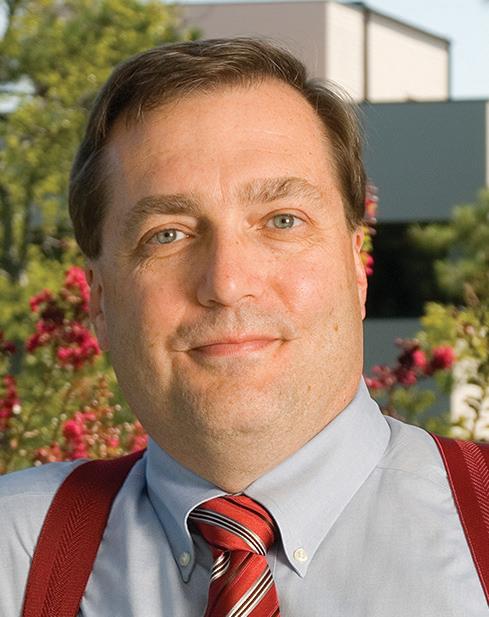
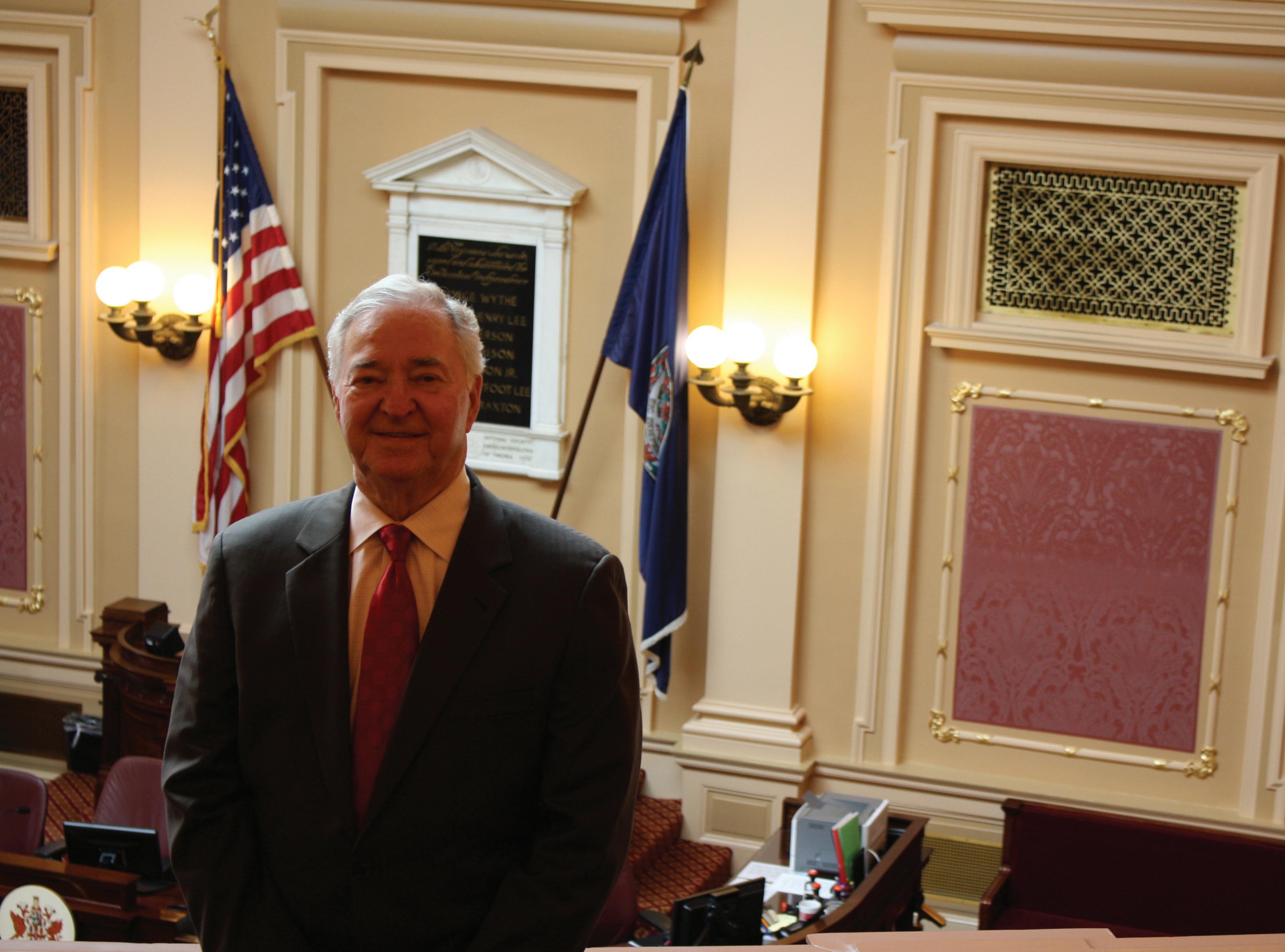 BY CHIP KNIGHTON
BY CHIP KNIGHTON
Virginia Sen. Walter Stosch, CPA, isn’t one of a kind, but he’s close. The VSCPA life member spent the last 33 years serving Virginia, in both houses of the General Assembly, and will retire when his current term ends. His departure will leave a void in the Assembly, both in statesmanship and in accounting and business expertise.
Stosch, 79, a Republican from Henrico, is one of just two CPAs to serve in the Virginia legislature. (The other was Kevin Miller, a VSCPA life member and fellow Republican from Harrisonburg, who retired in 2002.) His accounting background made him a natural choice to deal with tax and financial matters in Richmond. But to hear him tell it, even that experience pales in comparison to a willingness to listen to problems and provide solutions.
“The credential is symbolic of our background and experience,” he says. “But the more important aspect is whether or not we can provide assistance to resolving problems. That’s basically what the legislature is all about. It’s a matter of analyzing choices and making the best choice.”
Given that analytical nature, it’s fitting that Stosch, a man trusted as an economic expert by his decorated General Assembly colleagues, sought counsel from respected mentors before making the two choices that shaped his professional career. The first instance came when he was serving in a field hospital in the U.S. Army Medical Corps and sought counsel from his commanding officer, Maj. Gerald Champlain, a doctor who detailed the educational requirements of the medical field.
Maj. Champlain also clued Stosch in on the fact that he would owe the Army two years of service for each year of education he received on the military’s dime. After doing
the math and coming up with “a number that wasn’t satisfactory,” he spent some time thinking about the Major’s other suggestion — accounting.
He enrolled at the University of Richmond after being discharged, then circled back to accounting at the suggestion of a friend whose father was in the profession. The fact that he entered college at all marked a major victory for Stosch, who was, let’s say, a disinterested student at Warsaw High School on the Northern Neck.
“When I grew up, there was very little likelihood that I would ever have the opportunity to attend college,” he said. “I was lucky to graduate from high school. I thought I was a pretty good student until my children found one of my old report cards in the attic. I was not a good student in high school, in part because I didn’t try. And I didn’t try because I could see nothing after high school other than driving a truck or working on the farm.”
While at Richmond, a professor put Stosch in touch with a CPA who was looking for part-time help. That’s how he met Bob Gary, a former accountant with Southern States Cooperative who hired him in part because of his military background — but not for the reason you’d think.
“I thought that he had looked at my credentials and looked at me and my academic record and all those things and concluded
that this was going to be a great employee,” Stosch said. “I found out later that he was mad because his only employee had gotten drafted, and I was not eligible for the draft because I had been in the military.”
Regardless of the reason for his hiring, Stosch fit right in with Gary. He worked part-time for two years before joining full-time in 1959 for $350 a month, and the two joined forces with a third CPA to form Gary, Stosch, Walls & Co. two years later.
Stosch cycled through various partnership roles at the firm — audit partner, tax partner, and finally managing partner after Gary retired — and served as the firm’s primary recruiter throughout, although he describes his recruiting strategy as “hire the top two students at the University of Richmond and [Virginia Commonwealth University] in the junior classes every year.” In 1988, the firm was acquired by Touche Ross, which became Deloitte a few mergers later, but Stosch had taken on a new role by then.
In 1982, Stosch was approached by former Gov. John Dalton and a friend, Dave Kaechele, who recently retired from the Henrico County Board of Supervisors, who asked him to run for a newly created seat in the House of Delegates. Stosch initially declined, arguing that he was an integral part of his firm and that his employees depended on him: “Their careers are in my hands. I’m personally, professionally and financially more u
WALTER THROUGH THE YEARS. Clockwise from bottom left: With future Gov. George Allen during his time in the House of Delegates; on the campaign trail; posing with his car in front of the Virginia Capitol early in his career.

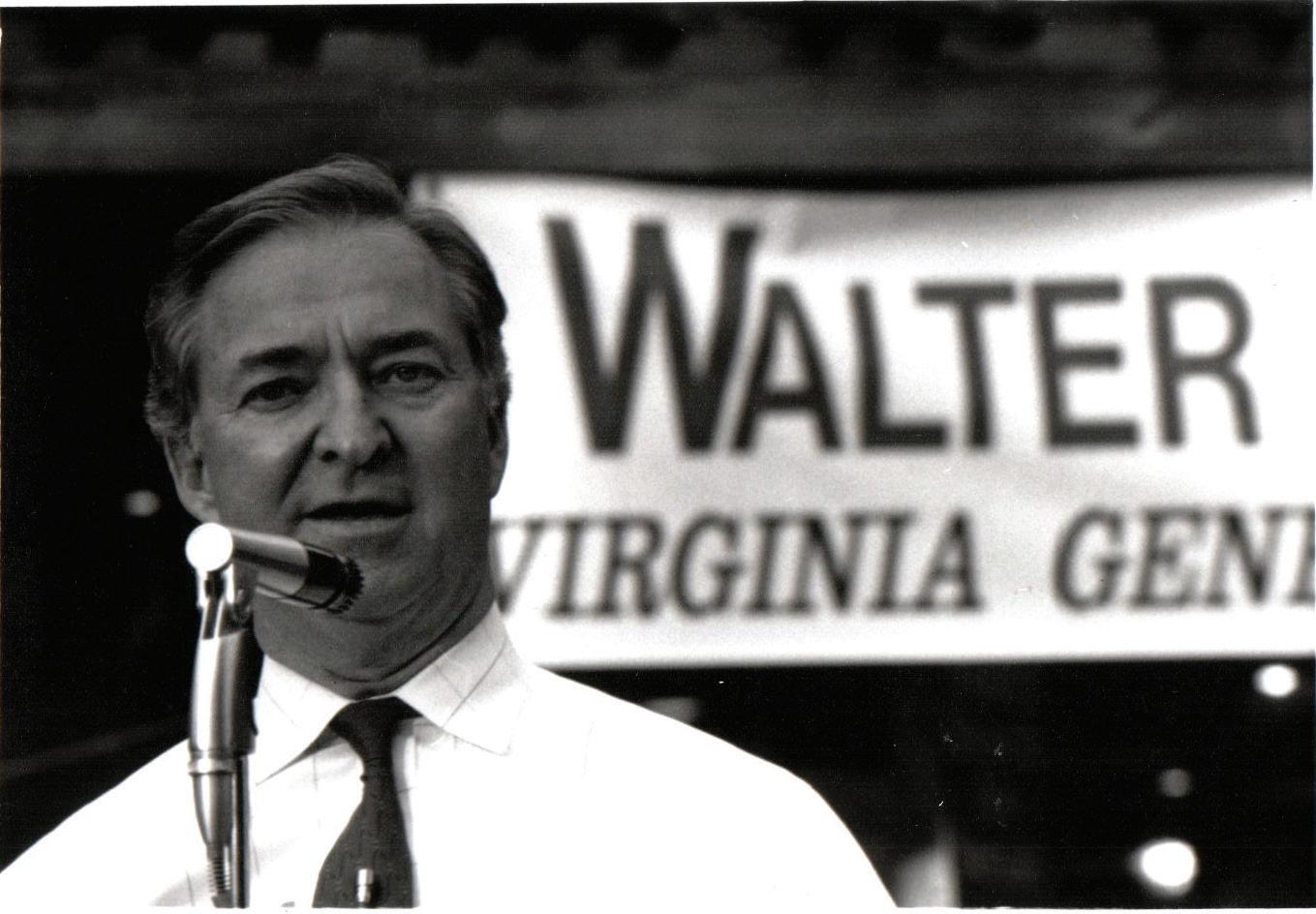
successful than I ever thought I would be when I left that little farm in the Northern Neck. So why would I want to do that?’”
Stosch relented and agreed to run for the seat after considering that even if he won, he would only be committed to two years of service. It also helped that Dalton appealed to his altruistic side.
“Gov. Dalton’s response, which has always been a motivation for me to serve, was, ‘It’s because you’ve been successful in business,’” Stosch said. “I’d already told him that my children were educated in the public school system and on the way to public colleges. He said, ‘It’s because of all of those things that you have a duty to give back.’”
Two years turned into a successful re-election
campaign, and another and then another, and soon there was talk about moving to the Senate, and he won that election, too, defeating Charlotte Armstrong in 1991 to take over the seat held by former Virginia first lady Edwina Dalton Phillips. And of course, with the victories came the committee assignments — House Finance, naturally, due to his accounting background, and then Senate Finance after moving to that body. When the Republicans took control of the Senate in 1998, he became the first GOP senate majority leader in Virginia history.
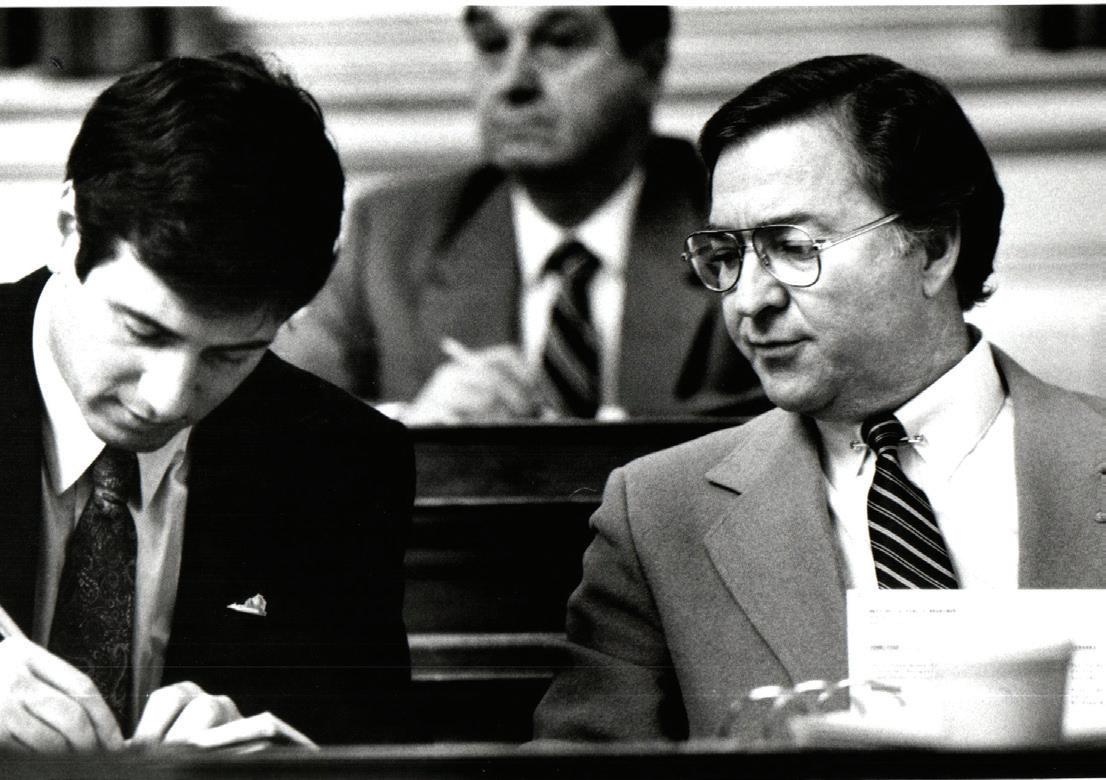
Through it all, he never lost his desire to make Virginians’ lives better, any way he could.
“One person can make a difference,” he said.
“Once you get here, once you find out how to make things happen, once you find out how
dependent individuals and businesses are on the legislature, it become a motivation in itself to be able to help people solve those needs.”
One opportunity to do just that came toward the end of his time in the House of Delegates, when the Tax Reform Act of 1986 created a windfall for Virginia estimated at $300 million due to discrepancies in the capital gains tax rate. Stosch and his colleagues used that revenue to overhaul the Virginia income tax system and return that money to taxpayers in the form of income tax credits.
Even if you weren’t a Virginia resident in the late 1980s, you’ve still likely benefited from a Stosch initiative. Until 2001, the Virginia Board of Accountancy (VBOA) operated under the supervision of the Virginia Department of Professional and
Occupational Regulation (DPOR), which controls the regulation of beauticians, realtors, tradesmen and other occupations. That didn’t sit right with many Virginia CPAs, and Stosch sponsored a successful bill that spun the VBOA into its own independent organization.
Stosch sold the bill, in part, by stressing that the VBOA could run sufficiently on license fees and would not cost Virginia taxpayers any extra money. But the main reason for the change was to protect those taxpayers in another way — through more effective regulation of the CPA stewards of their money.
“There was a feeling that a separate board of accountancy could better protect the public,” Stosch said. “That’s the sole purpose of regulation in accounting. It’s not to look after a bunch of CPAs. It’s to protect the public, to ensure that the services delivered by CPAs are
ethical, competent and all the things that go into making up a profession.”

And that dovetails beautifully with the qualities CPAs bring to elected office, on the rare occasions they run and win their election. Just 11 members of Congress are CPAs, and 104 CPAs hold elected and appointed positions at the state level, according to the American Institute of CPAs (AICPA). Once Stosch was elected, he quickly rose through the ranks and earned justified responsibilities because of his extensive financial experience.
“Analytic ability, research ability — all of those skills have been important to my career here,” he said. “Our members are doing a good job of interacting with CPAs in their local communities, so we’re thought of in those terms in high esteem.
“I’ve had an opportunity to work closely with members of the House and Senate over the years, and I’ve done everything I can to help them understand complex financial matters and tax matters. That has allowed me to develop a certain reputation and relationship with the other members. Any of our colleagues could do the same.”
Stosch retired from full-time practice shortly before embarking on his Senate run, but he wasn’t completely done with accounting. He had started the forensic accounting practice at Gary, Stosch & Walls, and he founded his own boutique forensic accounting firm after retiring from Deloitte. The current principal of that firm, now known as Stosch, Dacey & George, is his son, David, who followed a similar path into the profession after finding a mentor in John Sperry, the former chair of the Virginia Commonwealth University (VCU) accounting department.
“My son is very handy, so he would do a lot of work for Dr. Sperry, hanging pictures on the wall,” Stosch said. “All of a sudden, he started previewing textbooks and proctoring exams for Dr. Sperry. One day, Dr. Sperry didn’t ask him. He said, ‘You’re going to major in accounting.’ He said, ‘Yes, sir.’”
Stosch describes David as “a far better practitioner, more talented than I am in all aspects of accounting.” And he’ll soon have another family member in the profession for comparison, the third generation of Stosch accountants is about to enter the workforce. Walter’s granddaughter, Kelly, is currently going through the accounting baccalaureate program at VCU.
All three accounting Stosches took somewhat non-traditional paths to the profession. David was adamant growing up that he didn’t want to be a CPA, and Kelly initially focused on psychiatry and psychology before switching her focus.
That, and the way Stosch began his own accounting career, is why he’s so focused on providing educational opportunities to students who might not otherwise receive them. In 1983, he and an educator friend, u
A FITTING TRIBUTE: VSCPA life member Ellis Dunkum, CPA, was one of several colleagues to pay tribute to Walter Stosch upon his retirement. Visit vscpa.com/ WalterStosch to watch the full video or visit this page in the digital edition at disclosures.vscpa.com.

Dr. Ray Gargiulo, founded the Greater Richmond Area Scholarship Program (GRASP), which later changed its name to the Great Aspirations Scholarship Program after it outgrew the Richmond region.
“It was pretty important to me when I realized that part of my package from the army included the GI Bill,” he said. “With the GI Bill, even though it was a pittance compared to the cost of attending college, it was enough of
a boost for me to say, ‘I can make it.’ I made up my mind that if I were in those circumstances and a little bit of help made the difference, maybe that was something I should do.”
GRASP is a charitable nonprofit that helps students and their families navigate the financial aid process, awards scholarships and supports students through post-secondary education. One of the organization’s greatest strengths is its network of professionals who
Feb. 4, 2016 | 5:30 – 7:30 p.m. The Tobacco Company Restaurant, Richmond
Register for our next Mix & Mingle! Come expand your network and build business connections with members from the Virginia Bankers Association, Virginia Bar Association and Independent Insurance Agents of Virginia. Anyone is welcome to come to this FREE networking event! Visit vscpa.com/networking to register.
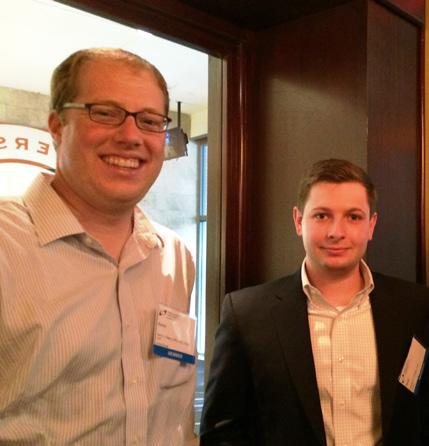
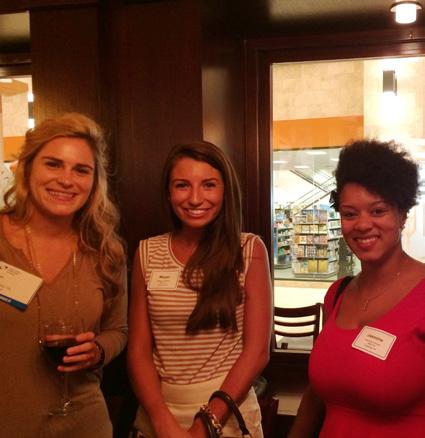
work with disadvantaged students to develop a game plan for after high school. Last year, GRASP served 76 schools and helped 7,000 students with their educational plans, leveraging $70 million in financial aid.
“There’s always an opportunity for us to identify young people who, just like me many years ago, had no thoughts of moving beyond high school because of the barriers. We can break down the barriers for these people.”
And as Stosch himself proved 60 years ago, you never know what those young people can become. A young man with no aspirations beyond the military and a farm turned himself into a partner in a regional accounting firm, a successful, respected elected official and the founder of a meaningful charity.
“I’m sure that others may have been able to achieve more than I, but I’ve achieved most everything that I think I’m capable of,” Stosch said. “I ended up being the head of a very large independent firm, and was able to leverage that into a partnership with a major firm, and then retire from that firm. I’ve had that experience of working with a three-man firm, a 135-person firm and then an international firm. All of those were great experiences.
“I can look back with a certain amount of satisfaction in saying I did the best I could.” n
SAVE THE DATE: A retirement party for Walter Stosch on Jan. 18, 2016, in Richmond. Details to come.
CHIP KNIGHTON is communications manager at the VSCPA, as well as contributing editor at Disclosures magazine. cknighton@vscpa.com connect.vscpa.com/ChipKnighton @ChipKnighton
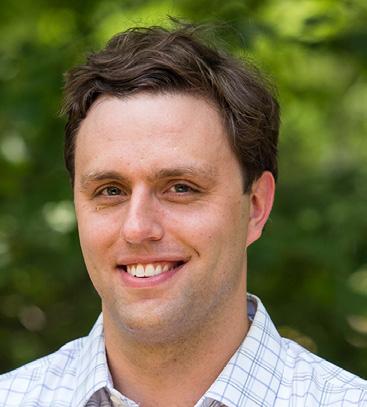
Are you/your professional staff really at the right level where you should be/you need them to be?
Are you/your staff in a position that truly suits your/their personality, values, and professional and personal needs?
If you’re seriously interested in making the “right” move for your next hire, I can help you. I am an actively licensed CPA in Maryland and Virginia with over 20 years of experience including public accounting (E&Y) and consulting (KPMG), financial accounting (American Cancer Society), internal audit (Moneyline Tele rate), and recruiting (Acsys, formerly Don Richards). As a networker who truly enjoys helping others and sharing my career experiences to guide fellow professionals, here is how I can help you:
Ask you questions, and most likely ask many more questions than other recruiters about your company, duties involved, skills required, corporate culture and more
Work with you on finding the “right” professional that is the “right fit”
Provide you with valuable information about the professionals I work with, the marketplace, what your competitors pay, and more
Guide you on career paths available in public accounting and industry
Enable you to capitalize on your strengths
Coach you on how to put your best foot forwa rd to find the “right fit”
Advise you when to stay in your current position if that is the right move
If you’re interested in working with a recruiter who understand s your background, skills, and is genuinely interested in helping you find the “right fit
then I welcome meeting you!
The following Statements of Financial Position and Statements of Activities reflect the VSCPA’s and VSCPA PAC’s financials for the 2014–2015 fiscal year. The full audited financial statements are available online in the “For Members” section of vscpa.com. More information on the VSCPA’s 2014–2015 programs and initiatives is available in the 2014–2015 “State of the VSCPA” report, also available at vscpa.com.
APRIL 30, 2015 2014
Cash and cash equivalents $ 1,336,866 $ 1,333,533
Trade accounts receivable 95,582 44,148
Investments 1,111,838 297,805
Prepaid expenses 226,456 190,737
Total current assets 2,770,742 1,866,223
Investments 175,223 985,425 Property and Equipment, Net 1, 244,870 1, 320,620
$ 4,190,835 $ 4,172,268
Accounts payable $ 53,244 $ 93,625
Accrued expenses 135,688 206,264
Deferred revenues 576,928 504,288
Accrued retirement 148,799 132,241
Total current liabilities 914,659 936,418
Unrestricted
Invested in property and equipment 1, 244,870 1, 320,620
Board designated for facility and technology 552,106 550,110 Board designated for operating expenses 945,467 1,027,483
Undesignated 413,581 206,675 3,156,024 3,104,888
Temporarily restricted (VSCPA PAC) 120,152 130,962
Total net assets 3,276,176 3,235,850
4,190,835 $ 4,172,268
YEARS ENDED APRIL 30, 2015 2014
Program:
Continuing education
Seminars
$ 1, 287,504 $ 1, 311,337
Conferences 400,402 539,085
Ethics 567,566 507,665
Online 149,500 89,900
Other CPE 19,730 13,552
Peer review 203,669 194,948
Membership 2,175,528 2,075,055
Communications 42,292 50,447
Students and young professionals 106,536 115,765
Net assets released from restriction, VSCPA PAC 81,308 80,336 5,034,035 4,978,090
Other:
Affinity income 171,444 180,034
Investment income 9,991 10,064
Unrealized gain (loss) on investments 1,831 (2,298)
Rental income 38,657 35,427
Gain/(loss) on disposal of property and equipment 1,128 (3,478)
Miscellaneous 10,637 3,292
Total support and unrestricted revenues 5,267,723 5,201,131 Expenses:
Program Services:
Continuing education 2, 371,650 2,168,075
Leadership 309,950 327,957
Peer review 186,274 181,957
Membership 701,180 696,462
Communications 266,417 310,095
Students and young professionals 262,541 239,585
Public relations 81,114 161,206
Legislative 262,497 181,289
VSCPA PAC 81,308 80,336
Supporting Services:
Administrative and general 693,656 838,917
Total expenses 5,216,587 5,185,879
Change in unrestricted net assets 51,136 15,252
Contributions to the VSCPA PAC 70,498 75,475
Net assets released from restriction, VSCPA PAC (81,308) (80,336)
Change in temporarily restricted net assets (10,810) (4,861)
Change in net assets 40,326 10,391
Net Assets — Beginning of Year 3,235,850 3,225,459
Net Assets — End of Year $ 3, 276,176 $ 3, 235,850

A warm, sunny day marked CPA Day of Service as Virginia CPAs dispersed into the community to perform acts of service in their communities. The event was the culmination of Virginia CPA Week, proclaimed by Virginia Gov. Terry McAuliffe as Sept. 13–19.
VSCPA members helped such organizations as the Richmond Animal League, Maymont, Union Mission Ministries, the Alzheimer’s Association of South Hampton Roads, the Arlington Food Assistance Center, Connor’s Heroes, St. Mary’s Home, Cross Keys Equine Therapy, the Down Syndrome Association of Greater Richmond and the Virginia Peninsula Foodbank, among many others.
And the giving back isn’t over! The VSCPA will hold a food drive at the CPA Center in Richmond through Dec. 17. If you’re joining us for a class, bring a can of food to donate!
Other CPA Week events included the VSCPA’s You Can Afford College workshops (see page 33) and the Virginia Economic Expectations Roundtable, held in partnership with Virginia Business magazine at the CPA Center on Sept. 10. (Yes, it was a few days before the week actually began, but hey, we’re busy here.) See page 9 for more information on the roundtable, featuring VSCPA members Jennifer Duff, CPA, Mike Gracik, CPA, James Haggard, CPA, and John Renner, CPA, and the accompanying survey.
On behalf of the VSCPA, thanks for everything you do for Virginia, and we hope you had a wonderful CPA Week! n
Do you know a Virginia CPA who deserves to be honored as one of the VSCPA’s best, or one of the best young CPAs in Virginia?
Don’t let exceptional work to go unnoticed. Nominate a worthy colleague for a VSCPA Distinguished CPA Award:
Nominate a young VSCPA member (35 or younger as of April 30, 2016) who has shown excellence in one or more of the following: professional achievement, VSCPA or local VSCPA chapter accomplishment, community contribution or dedication to the CPA profession.
Nominate a VSCPA member who has provided outstanding service to the profession through participation in VSCPA activities, civic engagement and charitable activities that further a positive image of accounting and the CPA profession.
Nominations are due by Friday, Dec. 4. Nominate online at vscpa.com/Awards or email VSCPA Member Engagement Manager Laura Cobb at lcobb@vscpa.com. n
That was the message of the VSCPA’s “You Can Afford College” workshops in September, presented in partnership with three Virginia senators and with the support of a generous grant from The Accountants Coalition.
The workshops were aimed at helping parents, students and educators prepare for the financial realities of secondary education.
The VSCPA held four workshops, with three taking place during Virginia CPA Week from Sept. 13–19. The workshops were held in partnership with Virginia Sens. Mamie Locke (D-Hampton), Louise Lucas (D-Portsmouth) and Donald McEachin (D-Richmond) in Hampton, Portsmouth, Richmond and Surry.
Huge thanks go to our member volunteers who made the events such a success! Nneka Green, CPA, Elsie Rose, CPA, Phil Umansky, CPA,
and James Young, CPA, brought the presentations to life. Members including Wright Aloba, CPA, Amy Bohrer, CPA, Melinda Coley, CPA, Clementine Cone, CPA, Nidia Cruz, CPA, Henry Davis III, CPA, Alicia Dominguez, Lisa Germano, CPA, Anna Hunter, CPA, Pavlina Novakova, Larry Pendleton, CPA, Melanie Randall, CPA, and Melanie Tyler, CPA, offered advice and discussed the CPA profession with interested students.
The VSCPA would also like to thank exhibitors and those who provided materials, including the American Institute of CPAs (AICPA), Virginia 529, the Federal Reserve Bank of Virginia, the Great Aspirations Scholarship Program (GRASP), Tidewater Community College, Virginia Credit Union, MetLife, Norfolk State University and Ameriprise Financial Services.
Moving forward, we’re hoping to expand the workshops across the state. Please let us know if you are interested in partnering to bring a future workshop to your area. Thanks to all our member volunteers! n
Thanks to all the VSCPA members who have already signed up to volunteer! Volunteer opportunities currently open are:
• Board of Directors (closes Dec. 15)
• Educational Foundation Board of Directors (closes Dec. 15)
• PAC Board of Trustees (closes Dec. 15)
• Young Professionals Advisory Council (closes Dec. 15)
• Accounting & Auditing Advisory Committee
• Peer
• Professional
• VSCPA Tax
Committee
Visit vscpa.com/VolunteerSchedule to volunteer. n
were named to Northern Virginia Magazine’s Top Financial Professionals list.
STEVEN VALDEZ, an associate at KPMG in Richmond, was named to the Virginia Advisory Board on Service and Volunteerism.
DHG WEALTH ADVISORS has been named to CNBC’s 2015 Top 100 Fee-Only Wealth Management Companies in the United States.
Alexandria firm HALT, BUZAS & POWELL was nominated as a 2015 Business Leader of the Year by the Alexandria Chamber of Commerce.
Top: Lindsay Andrews, CPA; Jacob Favaro, CPA
Bottom: Julie Gustavsson, CPA; Douglas Nickerson, CPA
LINDSAY ANDREWS, CPA, has joined Louis Plung & Co. in Pittsburgh as an audit & assurance manager.
ASTRID WALLECK, CPA, has joined Alexandria firm Halt, Buzas & Powell as a tax manager.


Glen Allen firm Keiter has promoted JACOB FAVARO, CPA, JULIE GUSTAVSSON, CPA, and DOUGLAS NICKERSON, CPA, to partner.
JOHN GRESHAM, CPA, has been named director of finance for business process outsourcer Liberty Source, PBC in Hampton.

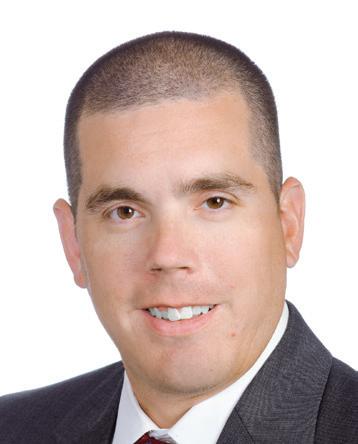
STEVE HALT, CPA, and CAROL MOUNT, CPA, of Alexandria firm Halt, Buzas & Powell,
MS CONSULTANTS, a company specializing in cost segregation studies and tax services for real estate owners and developers, has opened an office at 780 Lynnhaven Parkway in Virginia Beach.
Fairfax firm THOMPSON GREENSPON was named to INSIDE Public Accounting’s IPA 300, honoring the largest accounting firms in the nation. The firm ranked No. 276 on the list.
Fairfax firm THOMSON GREENSPON donated 592 pounds of canned goods and toiletry items for Western Fairfax Christian Ministries’ Food Pantry and 150 backpacks to the HomeAid NOVA Backpack Challenge. n
Email disclosures@vscpa.com if you have exciting news to share. n
GHAIDA ABU-GHARBIEH KELLY ANDERSON RODNEY BOLYARD BRANDY BRODE JOSHUA BROWN BRENDEN COLOGNA ADRIENNE ESSIAW RON FERRELL CRYSTAL FORD RUTH GARRETT KEVIN GILL SHERRI GOUDEAU ASHLEA HEVENER JULIA HOFFMAN BRIAN MASESSA ANNE MASLAMANI VIRGINIA MOHN SVITLANA MONTEVERDE JORDAN MUCHNIK MATTHEW NYE ENYIOMA ONUOHA CHRISTOPHER RAINES JOHN RANDOLPH JR. KEVIN REZZETANO JONATHAN SAAD CHERIE SMITH JONATHAN SOUTH TONISHA SPRATTE MICHAEL TIPPETT RONALD VERA BRANDON WELSH XIZHAO YAN MICHAEL YANKOSKI
List from August and September. Compiled Sept. 30, 2015. n
Visit www.vscpa.com/public/ catalog. Choose the “On Demand” tab to find the exam and others from previous Disclosures issues. n

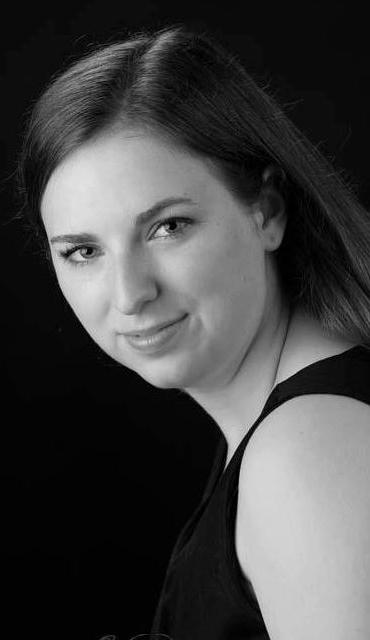
VSCPA President & CEO STEPHANIE PETERS, CAE, celebrates her 18th anniversary with the VSCPA on Dec. 1. Education Director LINDA NEWSOM-MCCURDY marks eight years on Nov. 13 and Communications Manager CHIP KNIGHTON celebrates his fifth anniversary on Dec. 13. Leadership & Outreach Coordinator TRACEY ZINK has left the VSCPA. Good luck, Tracey! n
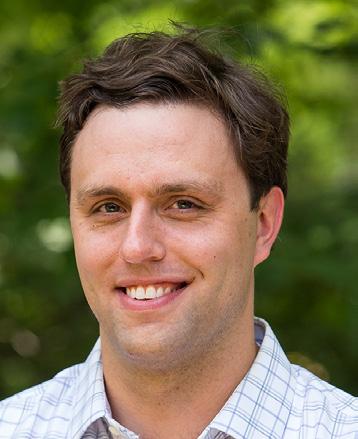
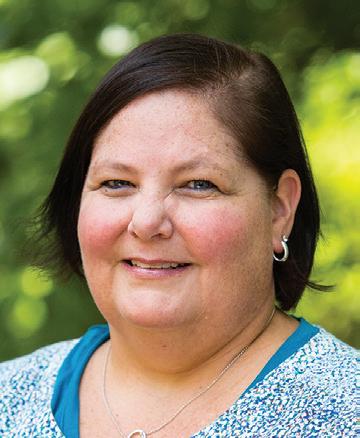
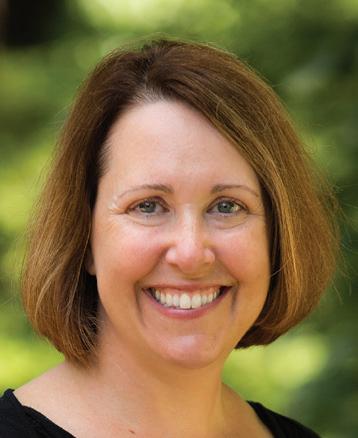
The VSCPA’s Richmond Chapter is hosting two upcoming networking and education events to help fill the needs of Richmond-area CPAs.
On Jan. 26, 2016, the chapter will hold its Nonprofit Conference at the Cultural Arts Center of Glen Allen at 2880 Mountain Road.
Registration and lunch begin at 12:30 p.m., followed by 4 hours of CPE, ending at 5 p.m.
The chapter is also holding its Richmond CPAs Night Out networking social from 5–7 p.m. on Feb. 25. The location had not been finalized as of press time.
Visit richmondcpas.org for more information and to sign up. n
“After a heavy course-load semester, it is so validating to know that my hard work paid off, and I am pursuing a field that is right for me. I look forward to one day taking the CPA Exam and remaining an active member with the VSCPA.”
VSCPAFoundation.com.
— Rachel Johnson, 2015 Michael E. Mares Scholarship Recipient
VSCPA 100% Member Firms show their commitment to their employees, the profession and the association. A 100% Member Firm is simply a Virginia CPA firm or company that has all of its CPAs enrolled as members in the VSCPA.

Interested in being listed as a 100% Member Firm? Contact VSCPA Member Relations Director Brenda Fogg at bfogg@vscpa.com or (804) 612-9409.
A.F. Thomas & Associates, PC
Anderson & Anderson CPAs, PC
Anderson & Reed, LLP
Anderson, White & Company, PC, CPAs
Andrews, Barwick & Lee, PC
Atlas Financial
Barnes, Brock, Cornwell & Painter PLC
Beale & Curran, PC
Beck & Company, CPAs, PC Bennett, Atkinson & Associates, PC
Biegler & Associates, PC
Black Marlin CPA (Ann Black CPA PLC)
Bowling, Franklin, & Co., LLP
Boyce, Spady & Moore PLC
Britt & Peak, PC, CPAs
Bruce, Renner & Company, PLC
Bullock & Associates, PC
Burdette Smith & Bish LLC
Burgess & Co., PC, CPAs
Burnett & Sneed, CPAs, LLC
Cameron, Moberly & Hamrick, PC
Charles H. McCoy Jr., Inc.
Charles W. Snader, PC
Chesapeake Accounting Group PC
Christopher A. Enright, CPA, PLC
Cole & Associates CPAs, LLC
Coley, Eubank & Company, PC
Corbin & Company, PC
Craver, Green and Company, PLC
Creedle, Jones and Alga, PC
CST Group, CPAs, PC
Dalal & Company
David L. Zimmer CPA PC
Diane Y. Smith CPA PC
Didawick & Company, PC
Donald R. Pinkleton, CPA
Donald W. Coleman, CPA, Inc., PC
Douglas L. Thompson, CPA PLLC
Duvall Wheeler, LLP
Eggleston & Eggleston, PC
Elmore, Hupp & Company, PLC
Everett O. Winn, CPA, PLC
First Capital Bank
Fritz & Company, PC
G4 CPA Firm, Inc.
Garland & Garland, CPAs, PC
Garris and Company, PC
G.L. Roberson CPA, PLLC
Graham and Poirot, CPAs, LLC
Gregg & Bailey, PC
Gregory & Associates, PLLC
Gurman & Company, PLLC
Hantzmon Wiebel
Harris, Hardy, & Johnstone, PC Harris, Harvey, Neal & Co., LLP
Henley & Henley, PC
Hogan & Reed, PC, CPAs Holland & Brown LLP
Homes, Lowry, Horn & Johnson, Ltd.
Honeycutt & McGuire CPAs
Hortenstine and McCown, CPAs, PC
Hottel & Willis, PC
Hughes & Basye, PC Hunt & Calderone, PC, CPAs
J. Goddin & Associates, PC
Jay E. Reiner CPA PLLC
John M. Watkins, CPA
Johnson, Equi & Co., PLC
Jones, Adams & Delp, PC Jones & Company CPA, LLC Jones CPA Group, PC
Jones, Madden & Council, PLC
Jones & McIntyre, PLLC JS Morlu, LLC
Kositzka, Wicks & Company Kris McMackin CPA
L.P. Martin & Company, PC Lane & Associates, PC
Larry D. Greene CPA PC
Lauren V. Wolcott, CPA, PC
Lent & Hawthorne, PC
M. Lee Winder & Associates, PC Maida Development Company
Mallard & Mallard CPAs, LLC
Malvin, Riggins & Company, PC Martin, Beachy & Arehart, PLLC McCallum & Kudravetz, PC McPhillips Roberts & Deans PLC
Meadows Urquhart Acree & Cook, LLP
Michael B. Cooke, CPA, PC
Michael R. Anliker, CPA, PC Mitchell, Wiggins & Company, LLP Moss & Riggs, PLLC
MJW
Mulkey & Co., PC
Nicholas, Jones & Co., PLC
PBMares, LLP
Pearson&Co., PC
R.P. Willis, PC
R.T. McCalpin & Associates
Renner & Company, CPAs, PC Ritchie, Withers & Masincup PC
Robb Scott Bradshaw & Rawls, PC
Robinson Consulting Group
Roger L. Handy, PC Rubin, Koehmstedt & Nadler, PLC Russell, Evans & Thompson, PLLC Rutherford & Johnson, PC Salter & Associates, PC
Saunders, Matthews & Pfitzner, PLLC
Saunders & Saunders, PC
Scheulen, Patchett & Edwards, PC Sells Hogg & Associates CPAs, PC Sherman, Spero & Safarino, Ltd. Spencer, Hager & Mosdell, PC Spitler, Stephens & Associates PLLC
Stephen Merritt CPA, PC Stephen F. Perry, PC Stephen T. Shickel, CPA, PLC
Steve Guy & Associates, PC Steve Walls & Associates, PLLC Stokes Office Solutions LLC Sullivan, Andrews & Taylor PC Terry L. Jones, CPA, LLC
The Cahill Group, LLC
The Davidson Group, PC
The Foley Group, Ltd.
Thomas E. Fraley, CPA
Thompson Greenspon Tongelidis Consulting, LLC
Updegrove, Combs & McDaniel, PLC
Valderas Financial Solutions LLC
Verus Financial Partners Wall, Einhorn & Chernitzer W.D. Sanders & Company, PC Wells Coleman
Wilkinson Consulting & CPA PLC
William B. May Jr., CPA, PC Wineholt & Associates, PC
Yancey, Miller & Bowman, CPAs PLLC Yount, Hyde & Barbour, PC
Compiled Sept. 30, 2015. Check vscpa.com/100Percent for a complete list. n
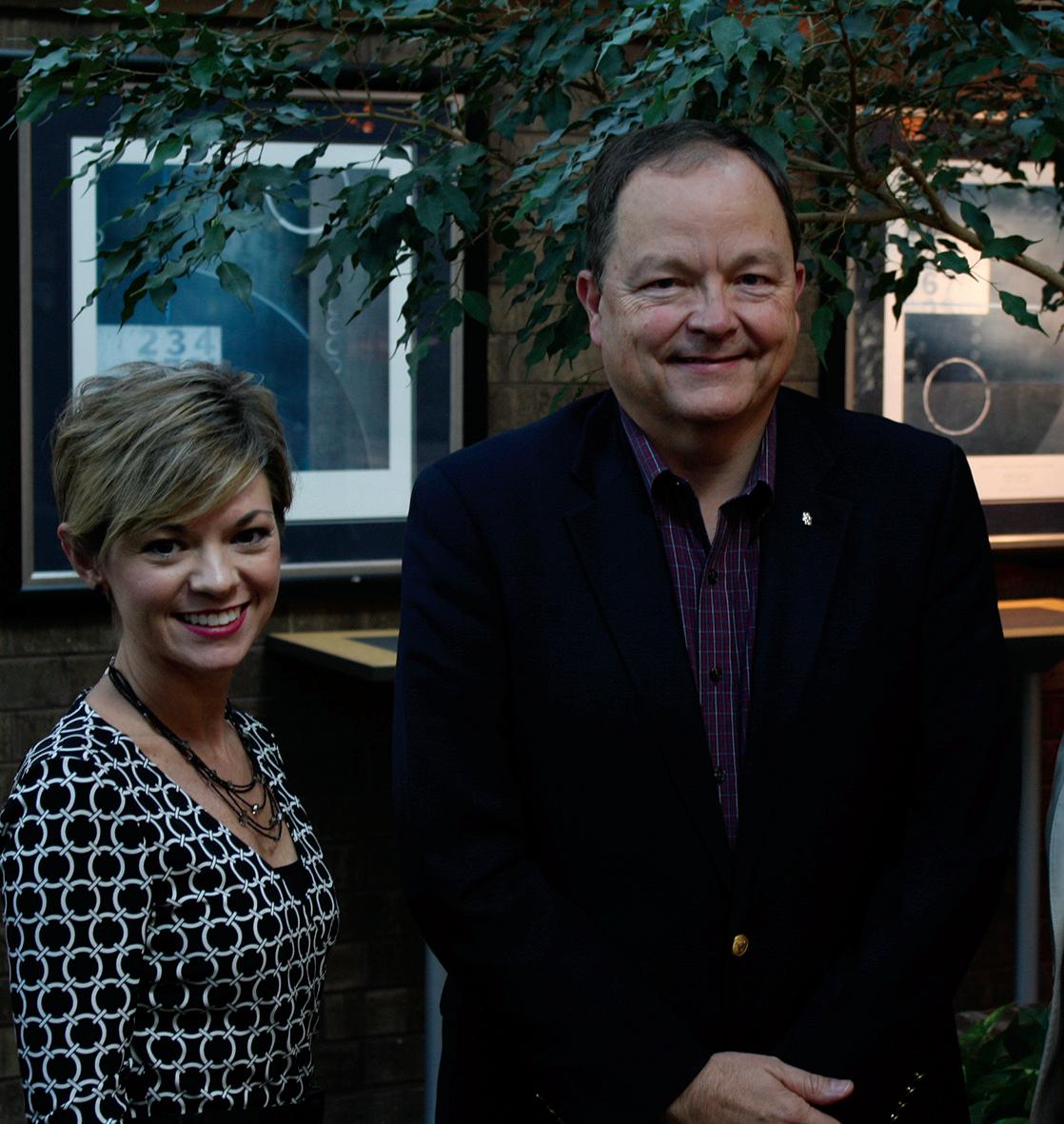





Vivian Paige, CPA, is a lecturer of accounting at Old Dominion University, her alma mater, where she primarily teaches income taxes. Prior to that, she maintained a CPA firm based in Norfolk but with clients all over the country. Her interests have led her to participate in several committees of the VSCPA including the Legislation Tracking Committee and the Tax Advisory Committee. She was the primary author of the 2014 revision to the Legislators’ Tax Guide, an annual product of the VSCPA Task Force of the same name. Her interests in politics and policy find her a frequent guest on radio and television and she writes a weekly guest column for The Virginian-Pilot.
I AM PASSIONATE ABOUT ... Lifelong learning. There’s always something new and interesting to learn. And it doesn’t have to be workrelated.
PEOPLE DON’T KNOW THIS BUT … I used to make my living singing and playing the piano six nights a week. When I started my firm, I didn’t have a single client. I had to make a living somehow!
IF I WEREN’T AN ACCOUNTANT, I WOULD BE … A professional football referee. Or at least I would have been if I were younger!
MY ADVICE TO FELLOW CPAs IS … Develop strong personal relationships with your clients. Don’t be afraid to let others see different sides of you. And, most importantly, take some time for yourself.
I NEVER LEAVE HOME WITHOUT … My cell phone and my debit card.
I WISH CPAs KNEW … To not be afraid of embracing the future. We have come a long way since the days of 10-column spreadsheets, adding machines and historical cost financial statements. Much lies ahead — carpe diem!
I’M A CPA BECAUSE … I had a dear friend and mentor who advised me to pursue it, although he never had done so himself. He said it would make a difference as I built my reputation. And he was right. n

POE GROUP ADVISORS: ACCOUNTING PRACTICE SALES, MERGERS & ACQUISITIONS — The new M&A season is underway. Let us help you find your next opportunity. Bank financing available, so sellers can receive cash at closing. Visit our website www.poegroupadvisors.com for resources and to see listings. Also, check out our latest articles published in The AICPA CPA Insider™ Email info@poegroupadvisors.com or call today 888-246-0974.
VA2003 — Virginia Peninsula $399,000.00
SC1058 — East Columbia $315,000.00
SC1062 — Rock Hill $255,000.00
SC2002 — Greenville $85,000.00
NC1094 — Asheville $925,000.00
NC1095 — Raleigh area $495,000.00
NC1100 — Asheville $225,000.00
NC1101 — Outer Banks $240,000.00
NC1103 — Durham $625,000.00
NC1105 — Chapel Hill $524,000.00
NC1107 — NC Coast
$735,000.00
NC2002 — Asheville area $450,000.00 NC2004 — Raleigh $895,000.00 NC2005 — Charlotte $900,000.00 NC2006 — Charlotte $525,000.00
SOLE PRACTITIONER SEEKS CPA TO TAKE OVER PRACTICE. Firm is located in Westmoreland County Northern Neck. Practice consists of accounting, compilations, payroll and income taxation. Five (5) years of experience required. Financial terms negotiable. Excellent opportunity for military veteran. Reply in confidence to #97, VSCPA, 4309 Cox Road, Glen Allen, VA 23060 or disclosures@vscpa.com.
SUBURBAN RICHMOND CPA FIRM FOR SALE. Primarily tax practice with some bookkeeping, payroll tax preparation, compilation and review work. Established firm with local clients. $325,000 gross. Reply in confidence to #96, VSCPA, 4309 Cox Road, Glen Allen, VA 23060 or disclosures@vscpa.com.



